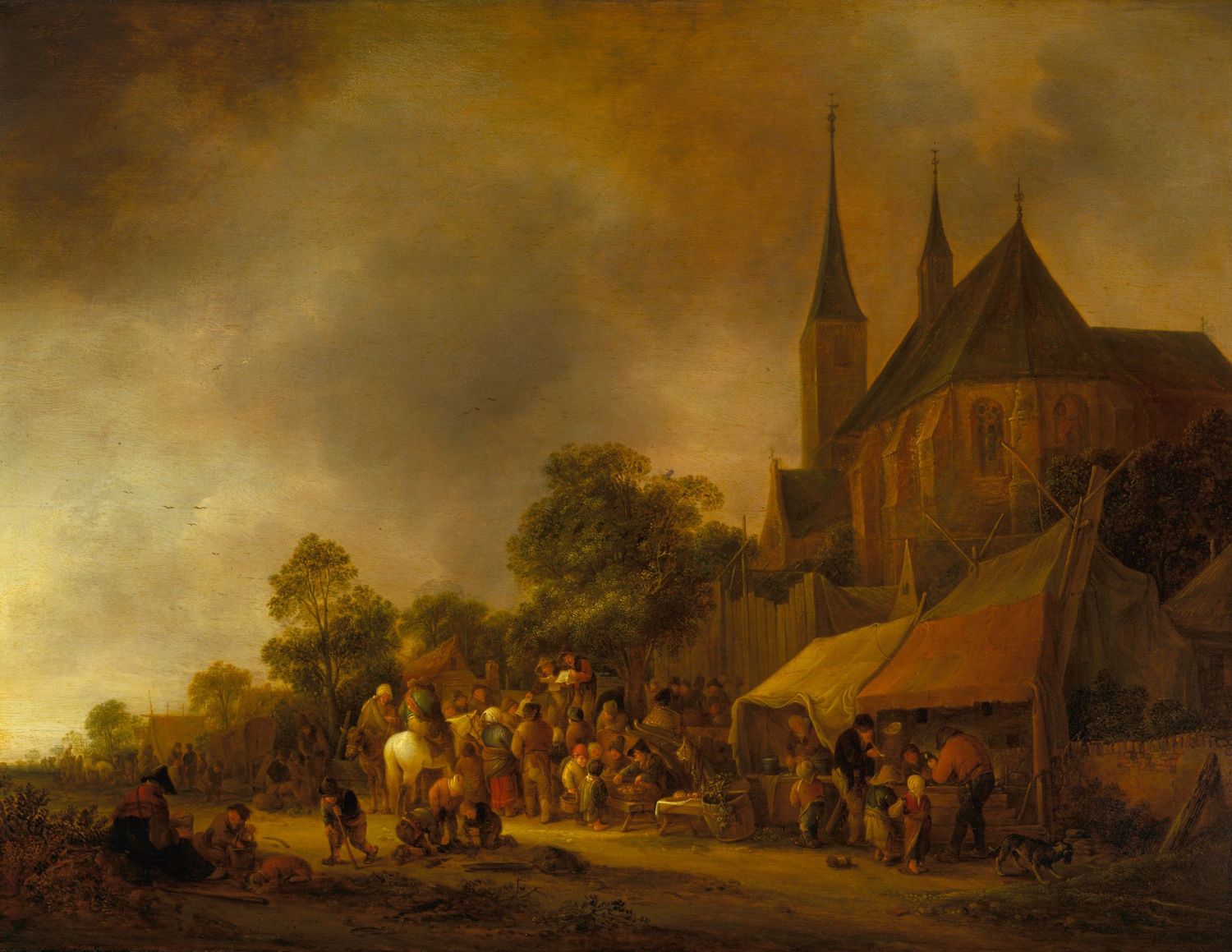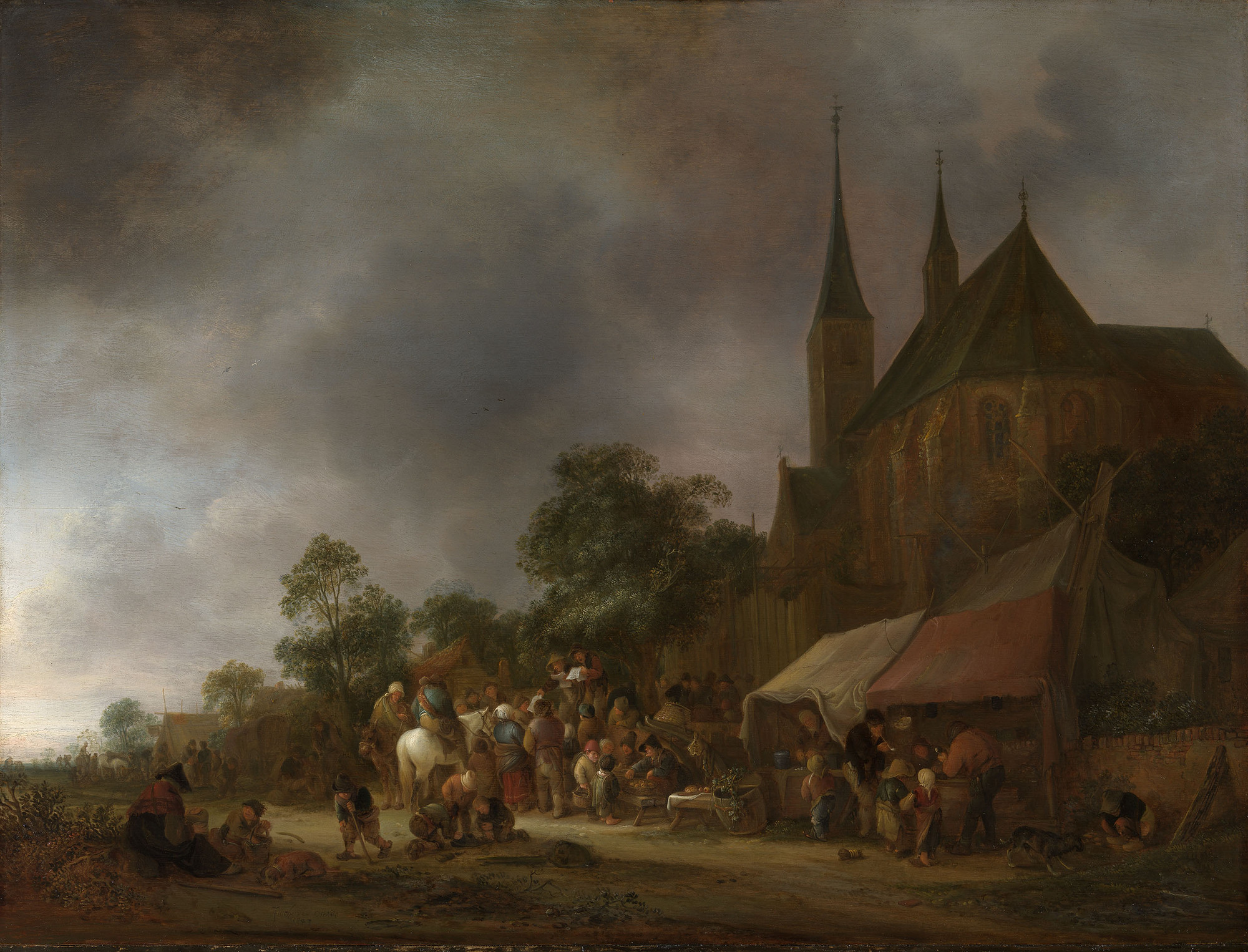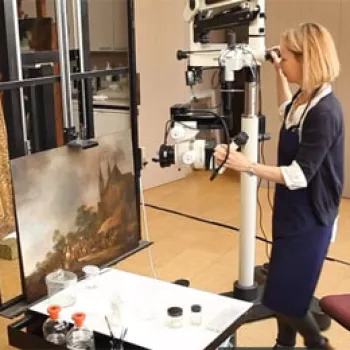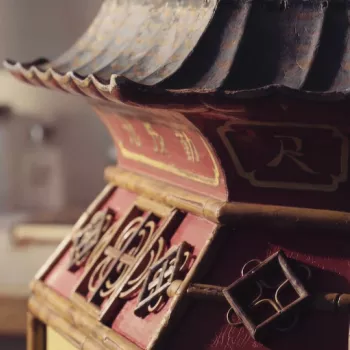Removal of varnish and overpaint
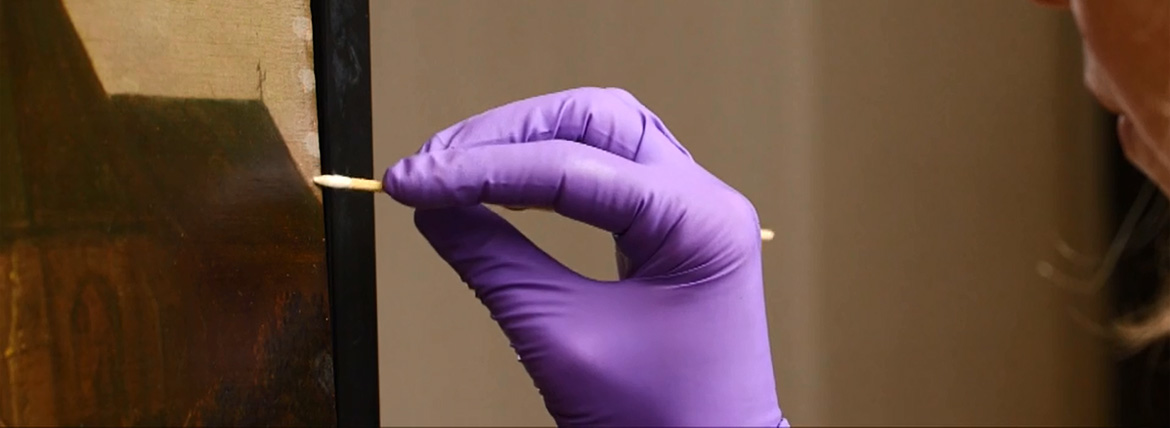
Over the years, paintings can darken with the accumulation of layers of dirt and soot. In addition, the varnish used to protect the paint layer can yellow with age. This can leave paintings looking dark and a long way from the artist's original intention. In many cases, carefully removing these layers can return the painting to something like its original state.
This process is only undertaken after careful tests, to ensure that no damage is done to the underlying paint layers, and with the consideration that any intervention must be reversible.
